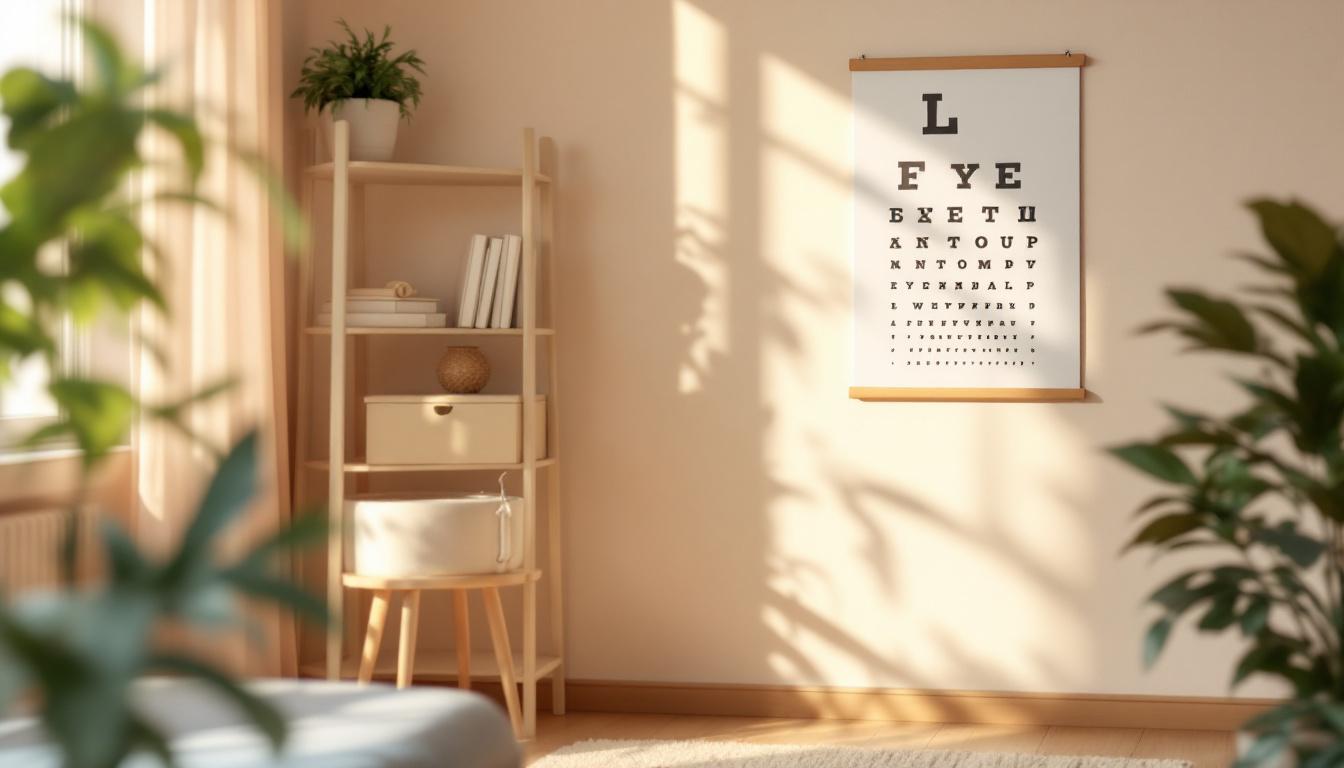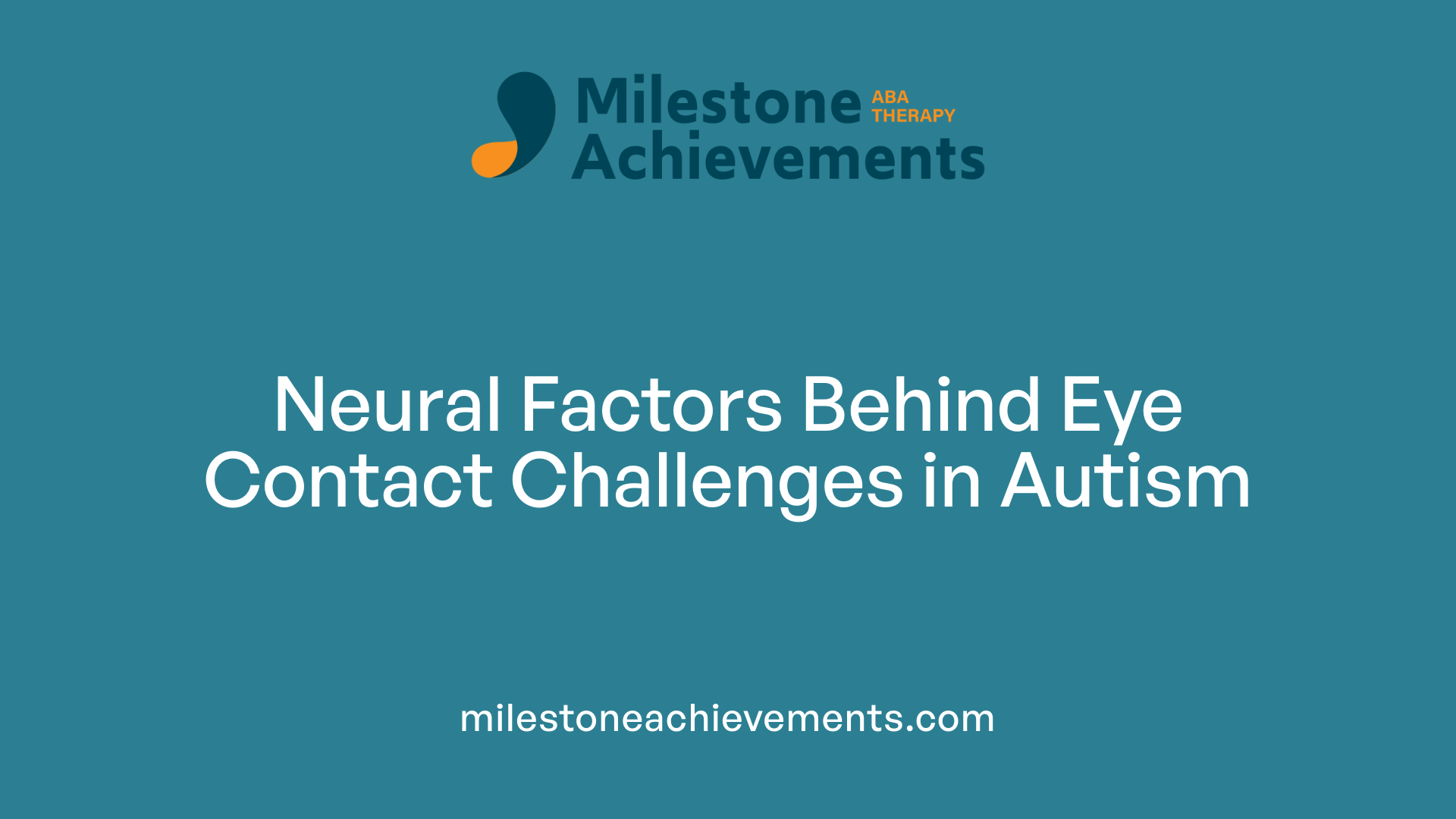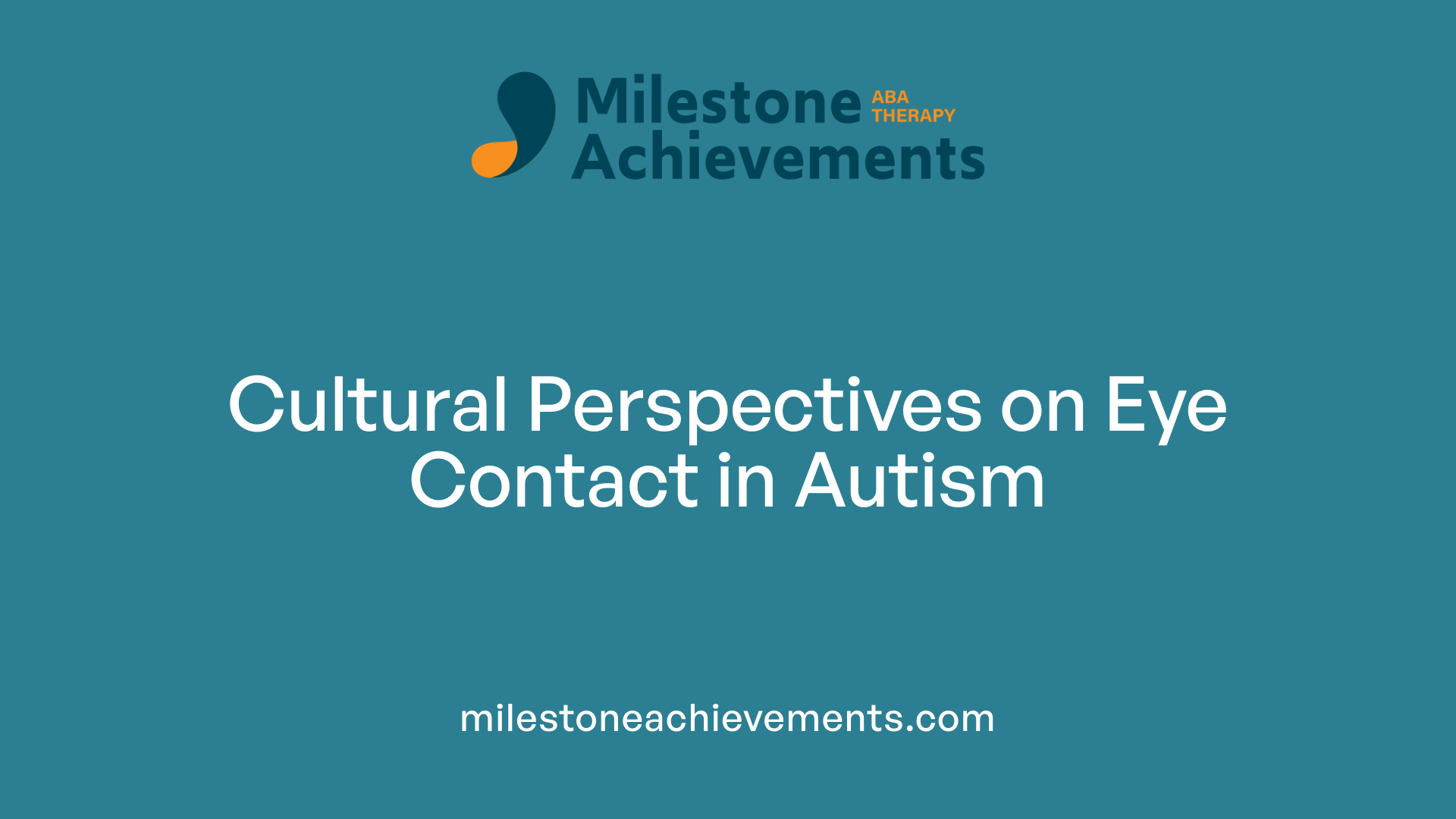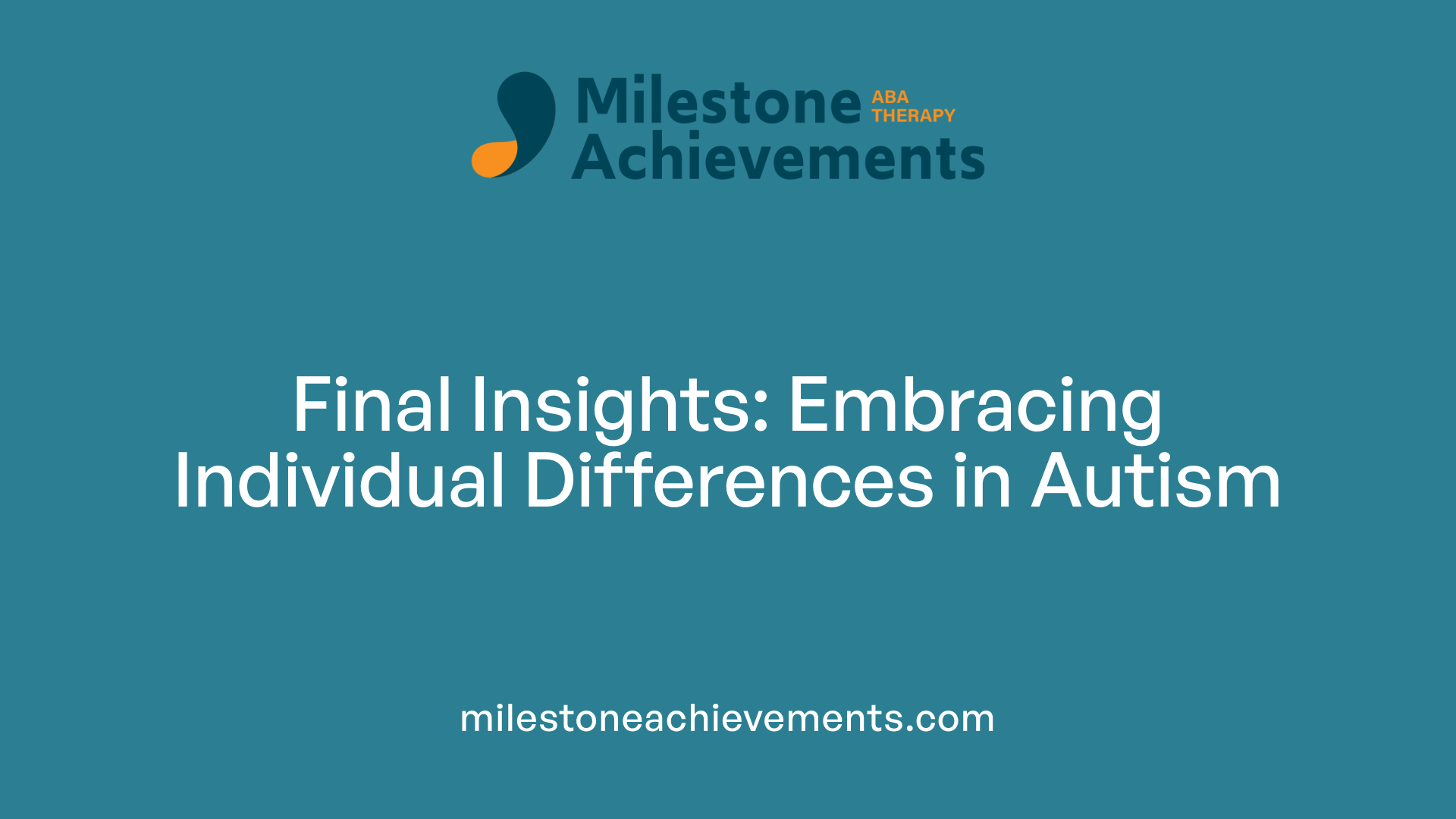
Is Lack Of Eye Contact An Autism Symptom?
The Complex Role of Eye Contact in Autism Spectrum Disorder
Understanding Eye Contact and Autism
Eye contact is a fundamental aspect of human communication, serving as a window into social engagement and emotional understanding. In autism spectrum disorder (ASD), a common core feature involves atypical eye contact behaviors, which can significantly impact social interactions. This article explores whether lack of eye contact is an autism symptom, the neural mechanisms behind it, and effective strategies for individuals with ASD.
Is Lack of Eye Contact a Recognized Autism Symptom?

Is avoiding eye contact a recognized symptom of autism?
Avoiding eye contact is one of the behaviors frequently associated with autism spectrum disorder (ASD). It is often considered an important aspect in early screening, as many autistic infants and children display difficulty maintaining gaze with others. This avoidance is not due to a lack of interest or empathy; rather, it often stems from sensory sensitivities, discomfort, or neural differences in brain regions responsible for social processing.
Research supports that many individuals with autism find making eye contact stressful, overwhelming, or even painful. For some, it can lead to sensory overload and anxiety, making it counterproductive. This has been linked to altered activity in brain areas such as the dorsal parietal cortex and the subcortical face-processing system, which are involved in attention and emotional regulation.
While many autistic people experience challenges with eye contact, responses can vary widely. Some can make eye contact with support and gradually improve their comfort through therapies like ABA or social skills training. Others may prefer alternative ways of nonverbal communication, like using facial cues or gestures that do not rely on direct eye gaze.
In terms of neural mechanisms, current studies show that during eye contact, individuals with autism exhibit less synchronized activity in relevant social brain regions, including the amygdala, fusiform face area, and prefrontal cortex. Contradictory theories about whether the amygdala is hypoactive or hyperactive have emerged, but the consensus indicates that atypical neural activity in these regions influences social cues processing, including eye contact behavior.
In summary, avoiding eye contact is a common, documented trait among many autistic individuals and is considered a characteristic behavior, reflecting underlying neural differences. However, responses to eye contact and the extent of avoidance vary significantly across the spectrum, emphasizing the need for personalized approaches in support and intervention.
Neural Underpinnings of Eye Contact Difficulties in Autism
 People with autism spectrum disorder (ASD) frequently struggle with maintaining eye contact, a critical nonverbal social cue. This difficulty originates from differences in brain activity within regions involved in social cognition, particularly the dorsal parietal cortex and the amygdala.
People with autism spectrum disorder (ASD) frequently struggle with maintaining eye contact, a critical nonverbal social cue. This difficulty originates from differences in brain activity within regions involved in social cognition, particularly the dorsal parietal cortex and the amygdala.
Research using neuroimaging techniques such as functional magnetic resonance imaging (fMRI) has shown that during attempts at eye contact, individuals with ASD exhibit reduced activity in the dorsal parietal cortex. This brain region is associated with attention and social processing. The degree of activity reduction appears to correlate with the severity of autism; the more severe the diagnosis, the less activation observed during eye contact. Additionally, neural activity in this region tends to be asynchronous in autistic individuals compared to neurotypicals, whose activity is often synchronized during social interactions.
The amygdala, a subcortical brain structure involved in emotional regulation and threat detection, has been a major focus of debate. Some theories, like the hypoactivity model, suggest that a less active amygdala leads to diminished salience of eye contact, contributing to avoidance behavior. Conversely, the hyperactivity model proposes that overactivation causes anxiety and hyperarousal, prompting individuals to avoid eye contact altogether.
Most neuroimaging studies support the hyperactivity perspective, indicating that in ASD, increased amygdala activity, especially during direct gaze and when processing fearful or ambiguous expressions, actually correlates with greater avoidance of eye contact. This hyperarousal may overwhelm the individual, leading to sensory overload and discomfort.
Further, the reduced connectivity between the amygdala and the prefrontal cortex can impair emotional regulation, making eye contact a stressful and overwhelming experience. When gaze cues are presented, neural activity in social brain regions such as the fusiform face area and superior temporal sulcus can be modulated, with gaze cueing potentially normalizing activity in individuals with ASD.
Understanding the neural basis of eye contact difficulties presents important implications for intervention strategies. For some individuals, gradual exposure to eye contact through positive reinforcement and tailored behavioral therapies can help develop more comfortable social gaze behaviors. However, forcing eye contact might increase anxiety and trigger masking behaviors that are mentally taxing.
In summary, differences in brain activity, especially hyperactivation in the amygdala and diminished activity in the dorsal parietal cortex, underpin many of the social-communicative challenges faced by autistic individuals regarding eye contact. These neural insights emphasize the importance of individualized approaches that respect the sensory and emotional sensitivities of autistic people.
Theories Explaining Reduced or Excessive Eye Contact in Autism
Is excessive eye contact possible in autism, and what does it signify?
While most individuals with autism spectrum disorder (ASD) tend to avoid eye contact due to discomfort and sensory overload, some may exhibit intense or prolonged eye contact. Such cases are less typical and often linked to masking or camouflaging behaviors intended to appear more socially typical.
Excessive eye contact in autism can sometimes indicate an attempt to connect more consciously in social situations. It might also be a strategy for managing sensory sensitivities or a method of coping with overwhelming stimuli. For some, it signifies an effort to adhere to social norms or to mask underlying discomfort.
However, this behavior is generally not indicative of typical social engagement. Instead, it can signal heightened anxiety or an attempt to regulate emotional responses. Recognizing these behaviors as part of an individual’s broader sensory and social processing profile helps in developing supportive strategies.
In summary, while avoidance remains the most common pattern, exceptions involving excessive eye contact highlight the diverse ways autism manifests. Understanding these variations emphasizes the importance of personalized approaches in social skills support, ensuring that interventions are respectful of individual comfort levels and social intentions.
Early Indicators and Developmental Aspects of Eye Contact in Autism
What are the early signs of autism related to eye contact in infants?
Infants who eventually receive an autism spectrum disorder (ASD) diagnosis often show reduced interest in making eye contact early on. As young as two months, some research has observed less engagement with eye contact compared to typically developing babies. By three to six months, most infants normally start to make consistent eye contact with caregivers; however, those on the autism spectrum may avoid this interaction entirely or only make fleeting eye contact.
This early avoidance is considered a red flag in developmental screening and can be linked to deficits in social motivation and sensory sensitivities. Parents and pediatricians look for behaviors such as not looking at parents, failing to recognize familiar faces, or avoiding eye contact during interactions. These signs are not definitive alone but are strong indicators warranting further assessment.
It is important to note that not all infants who avoid eye contact will develop autism, as some may be shy or have sensory sensitivities unrelated to ASD. Nevertheless, persistent lack of eye contact alongside other developmental delays can indicate early signs of autism, prompting early intervention which is crucial for better outcomes.
Strategies and Therapeutic Approaches to Address Eye Contact Difficulties

Are there strategies or interventions to improve eye contact in autism?
Yes, various targeted strategies and interventions can help improve eye contact among individuals with autism. Behavioral therapy and social skills groups are common and effective methods. These approaches often involve tailoring activities that gradually teach and reinforce eye contact, using positive reinforcement and modeling behaviors.
A popular technique is the gradual habituation approach, where eye contact is slowly increased over time, allowing the individual to become more comfortable without feeling overwhelmed. This process emphasizes patience and sensitivity, avoiding forcing or pressuring the individual, which can induce anxiety.
Implementing visual supports, such as cue cards or biofeedback tools like eye-tracking technology, can assist individuals in focusing on the eye region in a non-threatening way. Furthermore, leveraging each person’s interests or preferred activities can motivate engagement and make the process more enjoyable.
Parent-mediated practices embedded into daily routines also play a crucial role. These involve coaching caregivers to incorporate gentle prompts and positive reinforcement during natural interactions, helping to promote spontaneous social engagement.
It’s essential to recognize individual differences. Not all interventions are suitable for everyone, as forcing eye contact can increase stress and counteract social development. Alternative methods, such as using nonverbal cues like facing the person directly or commenting on social cues, can also serve as effective communication strategies.
In summary, successful improvement relies on personalized, stress-free techniques that support learning and comfort, ultimately fostering improved social interaction skills. The search for effective methods continues, with ongoing research into combining behavioral strategies with technology and naturalistic settings.
Cultural and Behavioral Contexts of Eye Contact in Autism

Can cultural differences influence perceptions of eye contact and autism?
Cultural norms play a significant role in shaping how eye contact is perceived during social interactions. In some cultures, maintaining direct eye contact is viewed as a sign of confidence, attentiveness, and respect. For example, many Western societies encourage direct gaze as a positive social cue.
However, in other cultures, prolonged eye contact can be seen as intrusive, disrespectful, or even threatening, especially when interacting with elders or authority figures. For instance, in some Asian, African, and Indigenous cultures, averting eye contact is considered a sign of politeness, humility, or deference.
For individuals with autism spectrum disorder (ASD), these cultural differences can influence how behaviors related to eye contact are interpreted and understood. Reduced eye contact in autistic individuals may be viewed differently depending on cultural expectations. This underscores the importance of context-aware assessments and interventions.
Clinicians, educators, and families should recognize that decreased or altered eye contact does not inherently indicate autism in every cultural setting. Respecting individual preferences and cultural backgrounds can foster more effective communication and social support.
Understanding these nuances helps prevent misdiagnoses and encourages the use of personalized strategies that respect cultural values while promoting social engagement.
Emphasizing individual comfort and choices
While eye contact can be a valuable social skill, forcing it can cause stress and diminish quality of interaction for autistic individuals. Respecting their comfort and preferences is crucial.
Using alternative methods, such as listening for verbal cues or observing facial expressions away from direct gaze, can support communication. The focus should be on creating a supportive environment where social exchange feels safe and respectful.
The importance of nonverbal communication alternatives
Nonverbal cues like facial expressions, body language, and gestures are equally important in conveying interest and understanding.
Examples include facing the person directly, using subtle visual signals like nodding, or verbal affirmations such as ‘yes’ or ‘okay’.
Encouraging diverse forms of communication helps individuals express themselves without the discomfort that eye contact might cause.
Tailoring strategies to each person's needs, preferences, and cultural background can nurture more meaningful social interactions.
Summary and Final Thoughts

The importance of understanding individual differences
Recognizing that each person with autism spectrum disorder (ASD) experiences eye contact differently is crucial. While some may find making eye contact stressful or overwhelming due to sensory sensitivities or neural overactivation, others might develop comfort through gradual exposure and supportive strategies. It’s important to avoid a one-size-fits-all approach, instead emphasizing personalized methods that respect individual preferences and emotional responses.
Balancing intervention with comfort
Interventions aimed at increasing eye contact should prioritize the well-being and comfort of the individual. Strategies such as gentle habituation, positive reinforcement, and alternative communication cues can be effective. Forcing eye contact can increase anxiety, hinder social learning, and even damage trust. Allowing choices and respecting cues helps foster a supportive environment where social skills can develop naturally.
Recognizing the neural and developmental complexity
Research shows that brain activity related to eye contact involves complex neural circuitry, including regions like the dorsal parietal cortex and the amygdala. Variations in activity levels—whether hypoactivity or hyperactivity—and differences in neural synchronization are observed among autistic individuals. These biological insights underline the importance of a nuanced understanding that combines neuroimaging findings with behavioral observations. This comprehensive view helps tailor interventions and promotes empathy for the diverse ways social engagement manifests in autism.
Navigating Eye Contact in Autism
Understanding the nuances of eye contact in autism reveals that it is not merely a behavioral issue but a complex interplay of neural, sensory, and developmental factors. While lack of eye contact is a common symptom and early indicator, responses vary widely. Interventions should prioritize comfort and individual needs, employing gentle strategies that respect sensory sensitivities. Ultimately, recognizing the diversity within the autism spectrum ensures more compassionate and effective social support, fostering communication and connection in ways that honor each person's unique experience.
References
- Why People With Autism Have Trouble Making Eye Contact
- Autism and eye contact
- Eye Gaze in Autism Spectrum Disorder: A Review of Neural ...
- Understanding Eye-contact Avoidance in People With Autism
- Understanding Autistic Eye Contact Challenges - Healthline
- Eye Contact and Autism | Otsimo
- Eye contact in adults with autism


Partner with us on your child's journey
Milestone Achievements offers evidence-based ABA therapy to help children with autism reach their full potential. Together we’ll set meaningful goals and celebrate progress every step of the way.
Start ABA Services Today


